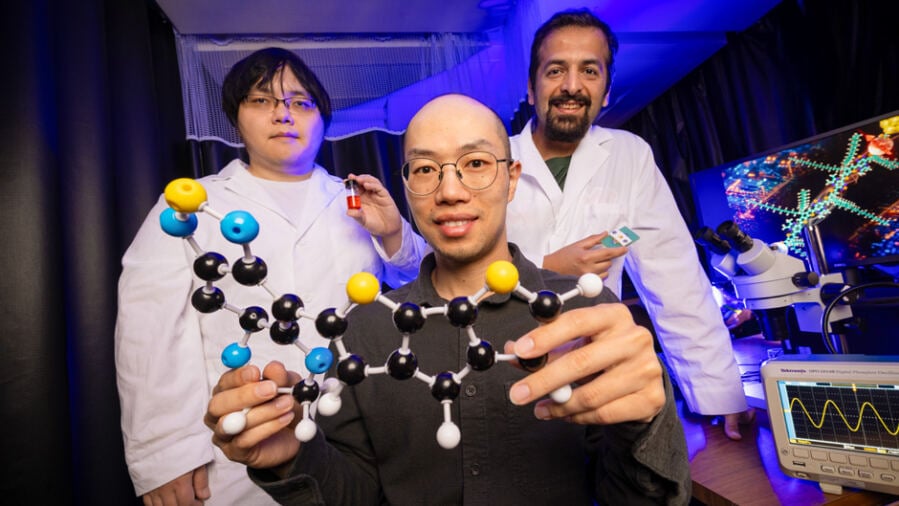A discovery that could upend computing has emerged from laboratories at the University of Miami, where physicists have created what may be the world’s most electrically conductive organic molecule.
The breakthrough, published this week in the Journal of the American Chemical Society, demonstrates for the first time that organic molecules can allow electrons to travel across them without energy loss over distances exceeding 20 nanometers – a capability previously thought impossible.
“So far, there is no molecular material that allows electrons to go across it without significant loss of conductivity,” explains Kun Wang, assistant professor of physics at the University of Miami College of Arts and Sciences. “This work is the first demonstration that organic molecules can allow electrons to migrate across it without any energy loss over several tens of nanometers.”
The research team, led by Wang and including graduate students Mehrdad Shiri and Shaocheng Shen, collaborated with scientists from Georgia Institute of Technology and the University of Rochester. Their two-year effort resulted in a remarkable new material composed primarily of naturally occurring elements – carbon, sulfur, and nitrogen.
Beyond smaller, more energy-efficient computing devices, the researchers suggest their discovery could enable entirely new functions impossible with silicon.
The timing is critical. Silicon-based computing has followed Moore’s Law for decades, with transistor density doubling approximately every two years. But physical limitations are threatening this progress.
“We are rapidly reaching the physical limits for silicon-based electronics, and it’s more challenging to miniaturize electronic components using the materials we have been using for half a century,” Wang notes.
What sets this molecular system apart is how electrons move through it. Unlike conventional materials where conductivity decreases exponentially as molecular size increases, these molecular “wires” maintain their conductivity across surprising distances.
“What’s unique in our molecular system is that electrons travel across the molecule like a bullet without energy loss, so it is theoretically the most efficient way of electron transport in any material system,” Wang explains.
The molecule’s stability under ambient conditions makes it particularly promising for real-world applications. Graduate student Shiri emphasized this practicality: “Since it is chemically robust and air-stable, it could even be integrated with existing nanoelectronic components in a chip and work as an electronic wire or interconnects between chips.”
Beyond smaller, more energy-efficient computing devices, the researchers suggest their discovery could enable entirely new functions impossible with silicon. The molecule’s structure results from “an intriguing interaction of electron spins at the two ends of the molecule,” potentially opening doors for applications in quantum computing.
The research team used a technique called STM break-junction under a scanning tunneling microscope to capture individual molecules and measure their conductance.
While practical applications may still be years away, the findings represent a significant step toward molecular-scale electronics using materials that are both inexpensive and laboratory-producible.
“These are new properties that would not add to the cost but could make computing devices more powerful and energy efficient,” Wang concludes.
If our reporting has informed or inspired you, please consider making a donation. Every contribution, no matter the size, empowers us to continue delivering accurate, engaging, and trustworthy science and medical news. Independent journalism requires time, effort, and resources—your support ensures we can keep uncovering the stories that matter most to you.
Join us in making knowledge accessible and impactful. Thank you for standing with us!

